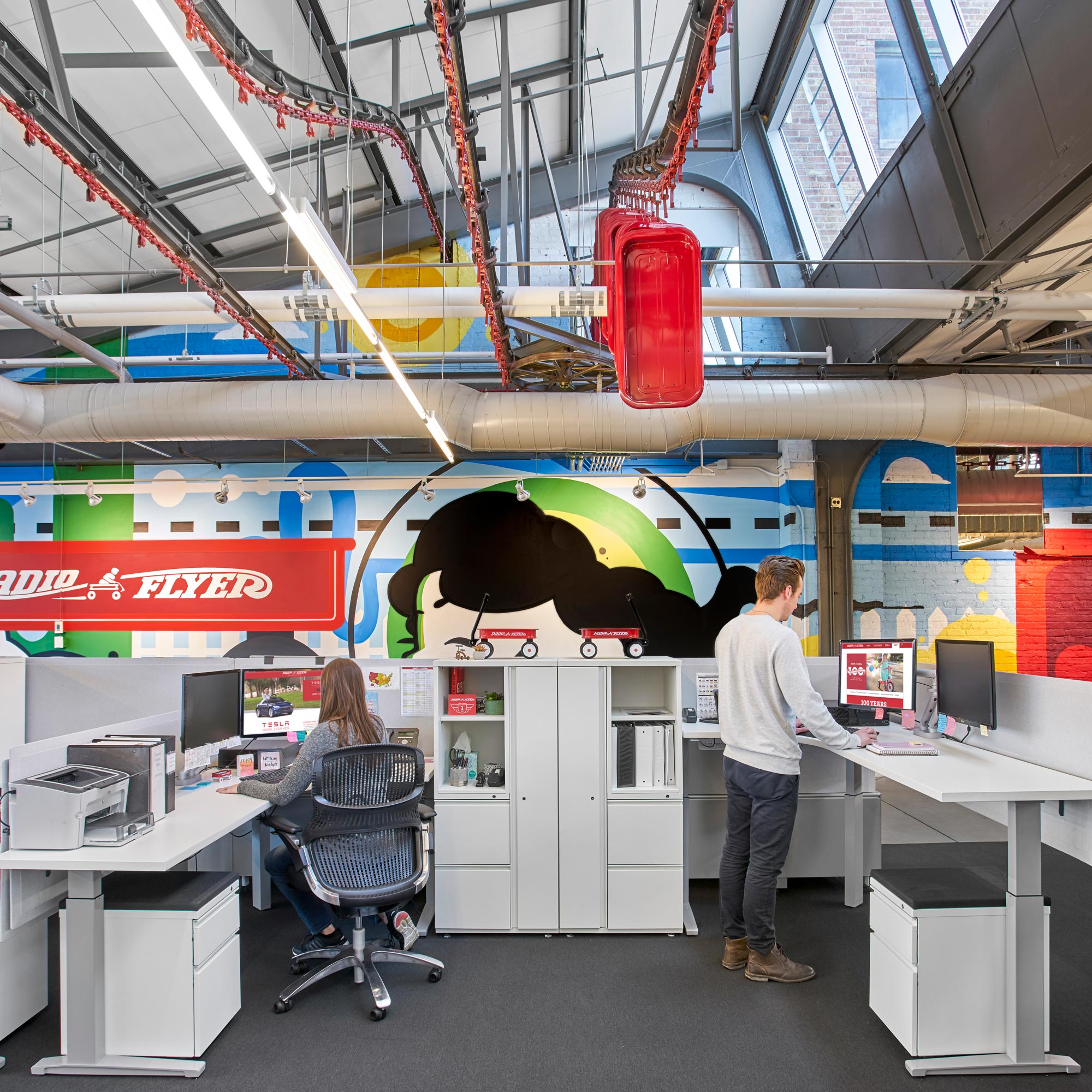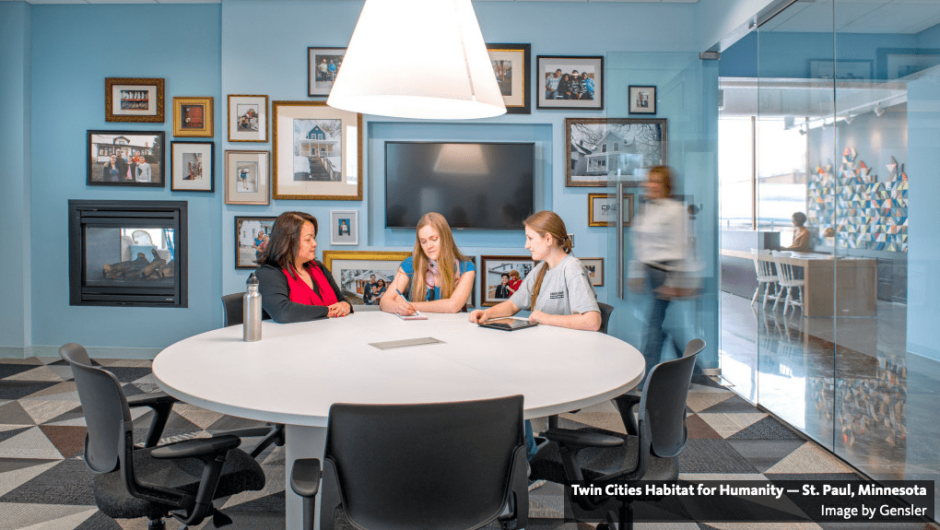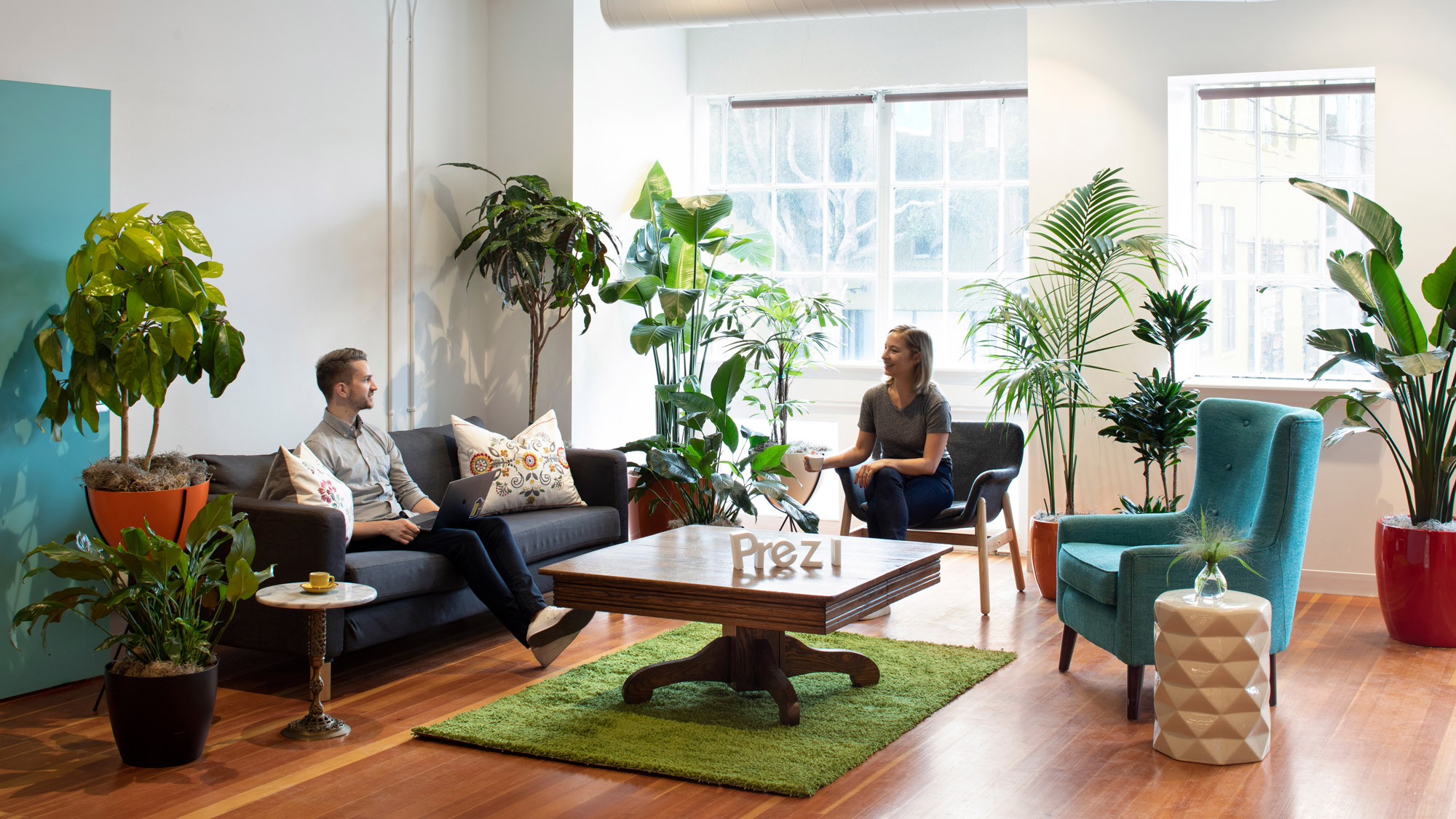If your organization isn’t already feeling the impact of our nation’s current labor shortage, it’s likely that it will soon. This shortage is not limited to industry or geography, and the gap is predicted to increase over the next decade.
As an Organizational Development professional, my background is rooted in the “soft” side of the workplace: driving culture, engagement, collaboration, talent attraction, benefits, and professional development. Today, I work closely with corporate real estate and facilities teams, as well as space planners and interior designers. While their core responsibility is to deliver the physical workplace, ensuring that space meets the functional needs of employees, the changing nature of work means they are increasingly focused on those same “soft” concepts.
Consider talent acquisition from an HR perspective: your well-crafted job posting enticed a candidate to apply. Your company website piqued their interest in your core business and your social media presence spoke to their values. The candidate will undoubtedly dress to make a good impression. But as they enter your workplace for their initial interview, what impression does the space itself make?
Does it reflect your company’s culture and values? With the shortage of workers expected to continue for years, leading organizations aren’t waiting for their next lease renewal to enhance their physical workplace. Instead, they’re exploring ways to leverage it as an asset for attracting and retaining talent.
Your physical space is a cultural asset
In Gensler’s most recent Workplace Survey, we uncovered a statistical link between the quality and functional makeup of the physical workplace and higher levels of creativity and innovation in an organization. In other words, where someone does their work can have a profound impact on culture, engagement, experience, and productivity.
Whether you report to HR or Corporate Real Estate, it’s important to recognize that the word “workplace” may mean different things to each department, but employees don’t distinguish between the two. The soft and physical sides blend together. When employees leave work at the end of the day, they only think about their overall experience at work.

Image by Gensler.
The real cost of attrition
The loss of a valued employee can send immeasurable ripples through your organization that impact the productivity and morale of those who remain. Research suggests that direct replacement costs can reach as high as 50 to 60 percent of an employee’s salary. Indirect costs, such as the loss of institutional knowledge and client relationships, can send that figure soaring, adding up to 90 to 200 percent of an annual salary.
According to Gensler’s recent workplace survey, experiential organizations that put an emphasis on collaboration, innovation, and culture have four times higher profits and double revenue on average. If the only job you are asking of your physical workplace is to house people, it is probably not living up to its fullest potential and even modest improvements can drive ROI when they create a better overall experience.
Three strategies for building an engaging workplace
1. The Purpose-Centric Workplace
Top talent aspires to align their passions and skills with an organization’s mission. The workplace is an opportunity to create a physical manifestation of your purpose. Your walls can communicate why you exist as an organization. The colors you select can celebrate your brand. The furniture, fixtures, and materials can all reflect your organization’s commitment to things like happiness, sustainability, and buying local. When the design aligns with your organizational brand and purpose, your workplace can send a strong and authentic message about who you are. With your words and actions also in alignment, cultural shifts and talent attraction should follow.
2. The People-First Workplace
Perception is reality. As challenging as they can be to manage, your employee’s perceptions are really their reality. They want to feel valued and know that their needs are being taken into consideration. Prioritizing a healthy work environment sends a clear message that people come first in your organization. Employing design strategies that help your staff connect with nature — such as access to natural light, greenery, and a diversity of workspaces, both indoors and out — can have a positive effect. Artificial lighting should be selected to minimize strain on the eyes and the environment. Strategically placed resources — such as hydration stations and restrooms — can encourage people to get up and move around. As for their personal work area, Gensler’s research has shown that the most innovative companies provide three times more access to sit-stand desks. The key is to give people the flexibility to work in whichever way is best for them in the moment.
3. The Untethered Workplace
According to Gallup’s recent State of the American Workplace report, more than half (54 percent) of office workers responded that they would leave their current job for one that offers more flexibility. But flexibility for today’s worker means more than just the ability to adjust work hours. Our research has shown the most innovative companies actually have twice as much choice not just when work occurs, but also where they work. (38 percent versus 17 percent).
Choice working vs. working from home
Increasing choice doesn’t mean everyone works outside the office. In fact, a vast majority of workers still prefer to spend a significant amount of their time in the office for a variety of reasons: proximity to teammates, access to resources, and the overall community. Whether your office refers to it as “agile working,” “choice working,” or something else entirely, it’s about more than just relegating people to a sea of openness.
Choice means having the right tools and spaces for the job at hand. Proximity, layout, adjustability, noise management, and technology are key factors in a successful rollout of this type of environment. Consider the type of work your staff needs to perform and create a variety of work areas that function well to support those tasks. Implementing a choice environment is a perfect opportunity for HR and CRE to partner. The strategy needs to align aspects of job function, policy, and the physical environment.
On the other hand, a work-from-home policy can be a great way to provide employees with better work-life balance. But before you rely on this approach, consider the current state of organizational health. The existing culture needs to be strong enough to support a widely distributed workforce. If your culture is not ready for a work-from-home policy, consider an intermittent remote working policy coupled with choice working in the office as a stepping stone to other choice programs.
Supporting remote work isn’t always easy, and without the organic moments of interaction that happen in a shared physical space, managers often have to create or encourage these types of interactions on their own. An effective workplace should support their efforts either through technology assets like simple, functional telepresence or HR initiatives that work to actively include distributed workers. A successful and inclusive remote working culture can be an excellent way to broaden an organization’s labor pool across geographies.
Winning the war for talent starts with your current team
The nature of work is changing, and the workplace itself must also evolve to support it. While there’s no one-size-fits-all solution, your current employees can be a valuable resource. By soliciting and listening to feedback, both the HR and CRE teams will gain a better understanding of workers’ needs, their perceptions of the physical space, and the tools they need to succeed at their day-to-day tasks.
Workplace design can impact key business drivers such as creativity, innovation, meaning, at-work relationships, and employee engagement; but only if they are well defined and aligned. When you consider the “soft” side of a workplace alongside the physical elements, you may find that even modest physical improvements could be more affordable than your next replacement hire.



